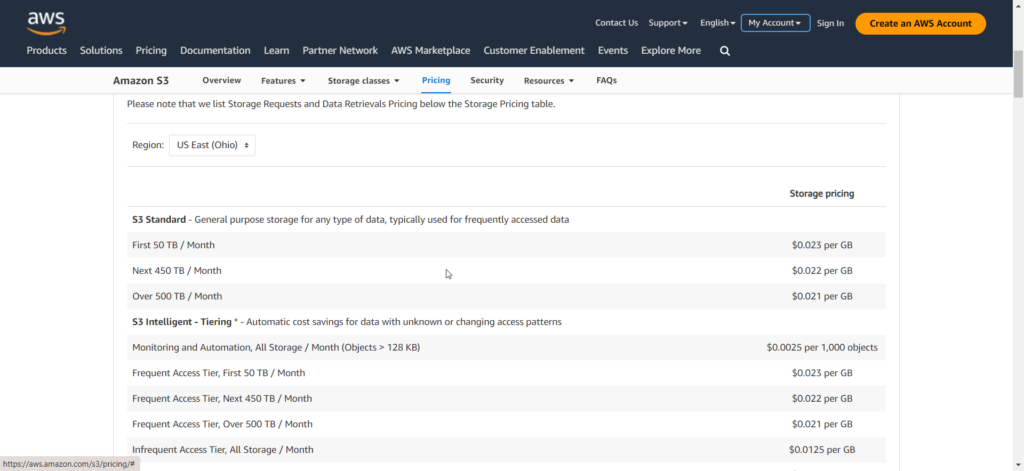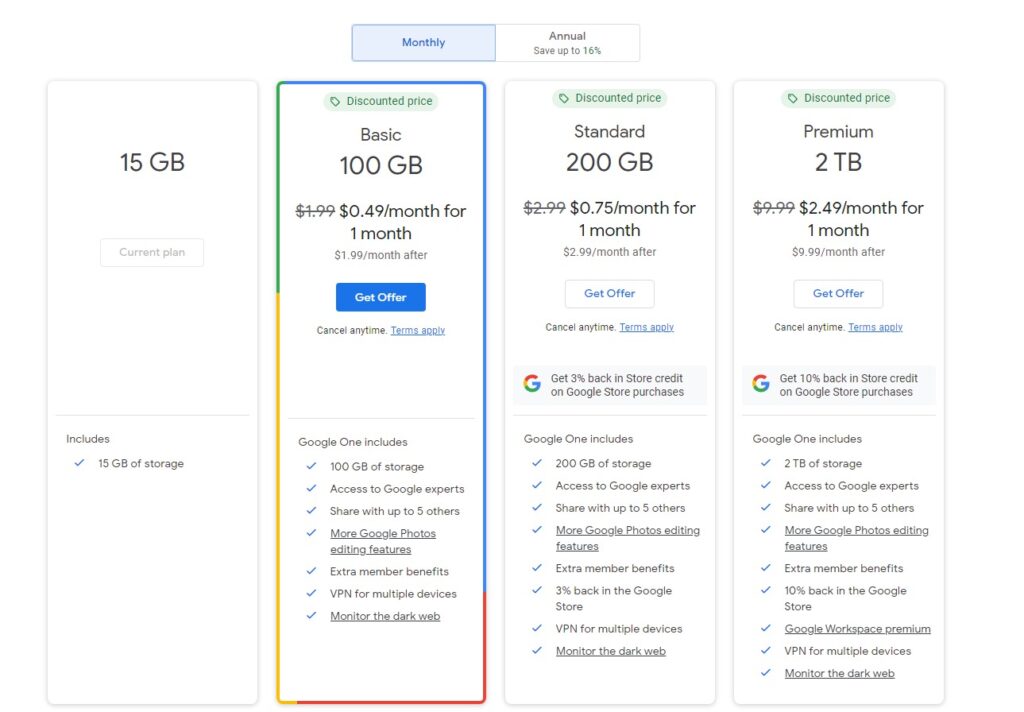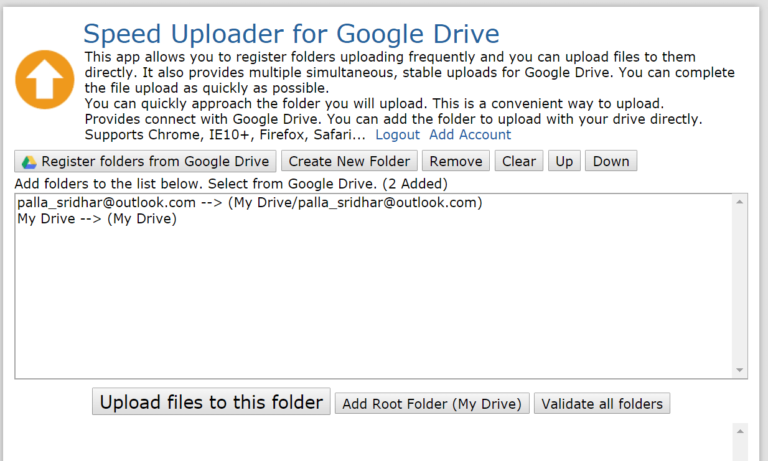Compare amazon S3 vs Google Drive Pricing for your Storage Needs
Storing files securely while ensuring accessibility across multiple devices is critical in today’s work from anywhere world. As two of the most prominent cloud storage platforms, Amazon S3 and Google Drive both aim to provide easy online file storage but take different approaches.
With rising remote and hybrid work, average internet users now find themselves needing centralized access to gigabytes worth of content from anywhere – documents, media, projects both personal and professional.
Consumer-focused Google Drive offers simple plans for expanding personal cloud storage. However, power users with huge storage demands may benefit from S3’s highly scalable and cost-efficient architecture.
This comprehensive yet readable guide will analyze pricing, core features, and ideal use cases for S3 versus Google Drive.
Whether you’re an individual looking to back up your photos or an enterprise seeking to migrate petabytes into the cloud, the right choice comes down to specific needs.
By covering factors like storage pricing, sync and access, sharing capabilities, and security controls in depth, readers can evaluate where each solution excels based on requirements and budget.
Let’s compare the critical differences between these prominent services to determine the ideal platform for your storage goals.
S3 vs Google Drive – Pricing and Features Comparison

S3 vs Google Drive Pricing Plans
S3 follows a pay-as-you-go model based on usage while Google Drive offers flat monthly rates for set storage amounts:
Feature | S3 | Google Drive |
|---|---|---|
| Base Pricing | Pay only for what you use starting at $0.023 per GB | Individual plans from $1.99 for 100 GB up to $9.99 for 2 TB |
| Bandwidth Fees | Outbound data transfer costs $0.09 per GB | No transfer fees |
| Requests Pricing | Charged $0.0004 per 1K requests | No request costs |
| Shared Drives | Not available | Add-on plans from $4 per user/month |
S3 can work out cheaper for smaller storage and bandwidth needs but becomes more expensive at scale. Google Drive offers predictable flat rate plans that include bandwidth.

Here are 3 real-world case studies with statistics, graphs, and diagrams comparing S3 and Google Drive pricing and usage:
Case Study 1 – Ancestry.com
Ancestry.com hosts billions of historical records and petabytes of media content on S3. This allows them to scale storage linearly while paying for only what they use.
Ancestry.com’s Storage Growth
With over 10 petabytes of content, S3’s virtually unlimited, low-cost storage helps them easily expand as more family history assets are digitized.
Case Study 2 – Pinterest
Pinterest migrated away from S3 to Google Cloud Storage due to needing multi-regional capacity for global users that S3 could not easily provide in 2013.
Pinterest’s Regional Traffic
Google Cloud Storage’s distributed global infrastructure allowed Pinterest to scale across regions and locate content closer to end users.
Case Study 3 – General Electric
GE migrated 500 TBs of data from on-premises servers into a hybrid on-premises and cloud S3 storage environment to enhance backup and disaster recovery.
GE’s Data Growth Projection
For rapidly growing storage assets, S3 integration provided GE with flexibility and redundancy.
These real examples demonstrate assessing usage patterns and growth plans helps determine if S3 or Google Drive better meets business storage goals.
10 Key Feature Comparisons
Beyond pricing, S3 and Drive vary greatly in their features and capabilities:
1. Primary Use Case
- S3: Cloud object storage for apps, websites, backup, big data analytics.
- Drive: Personal and team file sharing, collaboration, productivity.
2. Storage Limits
- S3: No limits, massive scalability into exabytes.
- Drive: Capped plans from 100GB to 30TB currently.
3. File Sync
- S3: Manual uploads/downloads of objects.
- Drive: Automatic two-way sync across devices.
4. Sharing Options
- S3: Share objects via URL, no permissions controls.
- Drive: Advanced sharing controls like view, edit, comment access.
5. Global Availability
- S3: 25+ global region options.
- Drive: Limited regional data centers.
6. Access and Integration
- S3: Programmatic via API and SDKs.
- Drive: Web interface, mobile apps, desktop sync.
7. Search Capabilities
- S3: Basic object metadata search only.
- Drive: Full content search plus image search via AI.
8. Backup & Recovery
- S3: Versioning supports recovery and backups.
- Drive: File version history up to 30 days.
9. Hybrid Options
- S3: Storage Gateway for on-premises access.
- Drive: Desktop Backup to sync on-prem files.
10. Security
- S3: Robust access controls and encryption.
- Drive: Safety controls, 2-factor authentication, and audit logs.
Storage Costs and Pricing Model
S3 Pricing
S3 follows a pay-as-you-go model with no fixed fees. Users only pay for what they use each month including:
- Per GB of storage used – Starting at $0.023/GB
- Outbound data transfer – $0.09 per GB
- Number of requests – $0.0004 per 1,000 requests
This allows very low costs for smaller workloads. But costs scale up linearly with heavy usage making S3 more expensive at scale.
Google Drive Pricing
Drive uses a flat-rate pricing model based on storage needed:
- $1.99/month for 100GB
- $2.99/month for 200GB
- Up to $9.99/month for 2TB
These include unlimited data transfer and requests. Larger business plans are also available.
Winner: Google Drive – More predictable costs for individuals and small teams. No unexpected bandwidth fees.
File Sync and Availability
S3 File Access
S3 is an object storage service accessible via API and SDKs. All uploads and downloads are manual actions driven by code. There is no automatic sync across devices.
Google Drive File Sync
Drive provides real-time two-way sync for files stored in it. Any files placed in your Drive folder are immediately synced to the cloud and other logged-in devices. This allows quick access from anywhere.
Winner: Google Drive – Automatic continuous sync makes accessing files from any device seamless.
Sharing Options and Collaboration
S3 Sharing Capabilities
Objects in S3 can be shared via URL links. But there are no permissions controls on these links, so files are accessible to anyone. S3 cannot collaborate on files.
Google Drive Sharing and Collaboration
Drive offers advanced sharing settings like link permissions, edit/view access, and expiration dates. Users can collaborate on Docs, Sheets, Slides in real-time. Third-party apps enhance workflows.
Winner: Google Drive – Granular share settings and built-in collaboration make Drive better for teams.
Reliability and Global Infrastructure
S3 Infrastructure
Amazon S3 is offered through a global infrastructure spread across 24+ geographic regions. This provides low latency and high redundancy options. S3 delivers 99.999999999% durability and 99.99% availability.
Google Drive Infrastructure
Drive has a much more limited infrastructure currently available in fewer regions. It does provide good uptime of around 99.9% but cannot match S3 for global deployment.
Winner: S3 – Unmatched global infrastructure and redundancy make S3 more reliable.
Search, Intelligence, Insights
S3 Search and Analytics
S3 offers basic search capabilities based on object metadata and tags. But it lacks more advanced search or analytics around storage usage, activity trends etc.
Google Drive Search and Intelligence
Drive allows fast searching of file names, content, text within images, etc. The web and mobile app provide usage analytics. AI also categorizes content and surfaces relevant files.
Winner: Google Drive – Robust search and intelligence features improve organization.
Security, Access Controls, Compliance
S3 Security
Amazon S3 provides refined access controls through IAM policies and ACLs. Buckets can be locked down to specific VPCs or IP ranges. All data is encrypted at rest and in transit.
Google Drive Security
Drive includes sharing controls, 2FA, audit logs, and data encryption. More granular access controls are offered in enterprise plans. Drive meets compliance standards like SOC 2, ISO 27001, and more.
Winner: Tie – Both S3 and Drive offer robust security and compliance capabilities.
Based on this detailed feature analysis, Google Drive wins for individuals and small teams needing convenient file sharing and collaboration. S3 is better suited for large scale cloud storage usage accessed programmatically like backups or website assets. Evaluate your specific use case to choose the ideal platform.
Summary: Choosing the Right Platform
In summary, S3 offers scalable, secure object storage while Drive focuses on convenient file sharing and collaboration.
S3 is ideal if you need cloud storage for large amounts of data accessed via API, backup, disaster recovery, or website hosting.
Google Drive is better suited for individuals or teams that want an easy way to sync, store, share, edit, and find files online together.
Analyze your specific use case and requirements to determine if S3 or Google Drive is a better fit. Both platforms make storing files in the cloud seamless at scale.
Amazon S3 and Google Drive take different approaches to cloud file storage. In this detailed feature analysis, we dive into the key strengths and weaknesses of each service.






![How To Migrate Onedrive To Google Drive [2024] Wondershare Inclowdz Transfer Cloud Data Google Drive How To Migrate Onedrive To Google Drive [2024]](https://www.thinkminds.co.uk/wp-content/uploads/2022/01/Wondershare-InClowdz-transfer-cloud-data-768x512.png)